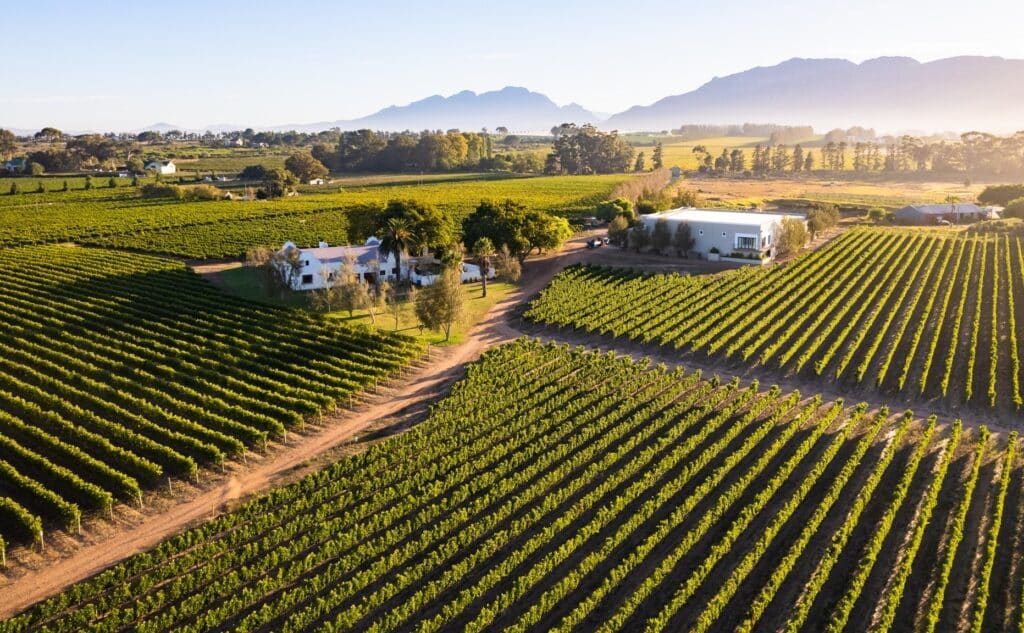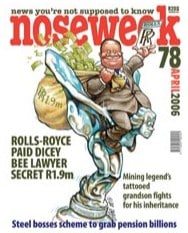Tim James: A note on wine names and the passage of time
By Tim James, 24 March 2025

A minor vicennial (vigintennial if you prefer) that I missed in my look at anniversaries earlier this year is that of the first vintage of Anwilka. How time has passed…. I can still (vaguely, across 20 years) remember the media visit to the Raithby, Stellenbosch vineyards for the release of that 2005. Present, of course, were the owners – Lowell Jooste of Klein Constantia and two grandees from Bordeaux, Bruno Prats the ex-owner of Château Cos d’Estournel and Hubert de Boüard of Château Angelus – and the charming young winemaker Trizanne Pansegrouw (now Trizanne Barnard and with a substantial independent winemaking career).
 I registered this not exactly original observation of the habit of time to pass when, for an irrelevant reason, I was looking through some of the “Hitting the bottle” columns I wrote for Martin Welz’s invaluable and now sadly defunct satirical-critical-irreverent magazine Noseweek for a couple of years from 2006. The first of those columns included what has been a percurrent trivial obsession of mine, the names that owners give their wines and properties. I mentioned there the first release of Anwilka, and pondered the name of the farm which the new owners had for some reason not only left intact, but had bestowed on their wine. I speculated that it was a concatenation of Anna, Willem and and Kaspar (or Antonio and Wilhelmina and Karriem). Michael Fridjhon, in his welcoming article in Business Day, had speculated rather differently – that the “litter of siblings” he presumed it had been named for were Andre, Willem and Karen. But today Google provided me with a most bizarre assertion from a Californian retailer specialising in Bordeaux. “The name ‘Anwilka’”, it declared, “is a combination of the names of the three founding owners of the estate: ‘An’ from Lowell Jooste, ‘Wil’ from Bruno Prats, and ‘Ka’ from Hubert de Boüard”. Huh? How did they manage to work that out as “a fusion of the first syllables of their respective names”?
I registered this not exactly original observation of the habit of time to pass when, for an irrelevant reason, I was looking through some of the “Hitting the bottle” columns I wrote for Martin Welz’s invaluable and now sadly defunct satirical-critical-irreverent magazine Noseweek for a couple of years from 2006. The first of those columns included what has been a percurrent trivial obsession of mine, the names that owners give their wines and properties. I mentioned there the first release of Anwilka, and pondered the name of the farm which the new owners had for some reason not only left intact, but had bestowed on their wine. I speculated that it was a concatenation of Anna, Willem and and Kaspar (or Antonio and Wilhelmina and Karriem). Michael Fridjhon, in his welcoming article in Business Day, had speculated rather differently – that the “litter of siblings” he presumed it had been named for were Andre, Willem and Karen. But today Google provided me with a most bizarre assertion from a Californian retailer specialising in Bordeaux. “The name ‘Anwilka’”, it declared, “is a combination of the names of the three founding owners of the estate: ‘An’ from Lowell Jooste, ‘Wil’ from Bruno Prats, and ‘Ka’ from Hubert de Boüard”. Huh? How did they manage to work that out as “a fusion of the first syllables of their respective names”?
Anyway, what seemed to me more interesting in my column from 2006 was noting that some of the winery names I mentioned (not all of them with a touch of disdain) have, less than 20 years later, disappeared from South African wine. Sometimes just the name has changed, sometimes the disappearance is deeper. I think Linton Park might still be there but it’s hard to ascertain. It was last mentioned in Platter’s in 2021, not that such an absence is rare or means much these days, unfortunately. But I’m pretty sure Dormershire is no more. (The way past things linger on the world wide web is most unfortunate for the seeker of current information, especially as so little material has dates attached.) I’d instanced those two as “sounding as though they’ve been dragged from the cool green pages of a Jane Austen novel to bake under southern skies”. So too has Landau du Val disappeared, a brand elegantly linking the name of the now deceased owner, Basil Landau, to the French tradition in Franschhoek.
Something that also, more happily, disappeared is what I in 2006 called “the most awful new winelands name I’ve come across recently”. It belonged to a big Stellenbosch company rather than a single farm. The change of name from the reasonably dull (if slightly megalomaniac) “Omnia” to “the company of wine people” was announced as set to happen on 1 April. Some of the wine hacks, I reported, had speculated that this was a premature April Fool joke – but it turned out the name change was for real, including the lack of upper-case letters in the branding. Fortunately, the name was to be changed again, in 2013, and the company is now serenely called Stellenbosch Vineyards, without being capital-challenged, and doing pretty well on an international scale, it seems, under its French owner, AdVini.
A successful brand name arose, like Anwilka, from what I suggested was the yoking together of element that might be better apart. I did wonder back then if Tokara, named for Thomas and Kara, the children of owner GT Ferreira, wasn‘t a bit tricksy. And would Tokara, I pondered, come in time “to sound more like a South African wine estate and less like that of a Balinese restaurant?” Now, of course, it’s part of the Stellenbosch furniture – and I’m left wondering in retrospect why I thought it sounded Balinese…
I did welcome, back in 2006, the persistence of “those lovely old Dutch names – euphonious, groaning with history and often a touch lugubrious – Buitenverwachting, Allesverloren, Vergenoegd, Welgemeend.” But the return of a good deal of modern Afrikaans to labels hadn’t yet happened. And to me now, the obvious omission in my thinking of dubious developments in personal-celebration branding was the emergence of the sometimes reasonable, sometimes rather naive, sometimes cynical “Family Wines” phenomenon. In 2006, though, the practice was still in its infancy,and my irritation with it had not yet blossomed, as it certainly had by last year, when I wrote about it here.
- Tim James is one of South Africa’s leading wine commentators, contributing to various local and international wine publications. His book Wines of South Africa – Tradition and Revolution appeared in 2013.








Comments
0 comment(s)
Please read our Comments Policy here.